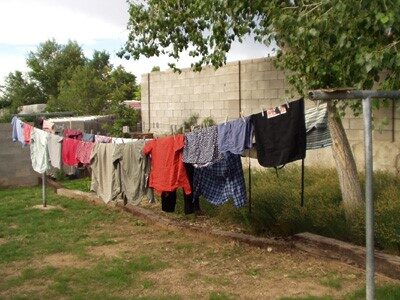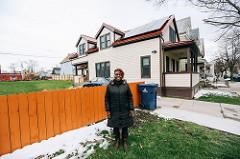From Boutique to the Street: Bringing Climate Solutions Narratives to the Ground
March 6, 2018
Riding through the desert heat with my younger sister, I ask her whether she thinks we as a society can solve climate change. “Hell no” she answers, “there is too much to do.” My sister’s response corresponded well with all the articles I had been reading and the people I had been talking to all summer. When it comes to climate narrative: doom and gloom prevails. Through my fellowship with the Environmental Fellows Program, I am working with The Solutions Project, an organization committed to the transition to 100% clean energy for all. My work there analyzes climate change narratives and messengers.
The people I’ve interviewed see that the climate narratives sound a lot like my sister. Tracy Van Slyke from the Pop Culture Collaborative sees that the dystopic popular narratives don’t give people enough visions of hope: “I keep hearing this sort of doomsday like, ‘we have five years, and then we are done’ and it just feels too big” (Personal communication, 7 July 2017). For example in the picture from Mad Max: Fury Road below, the narrative of the Earth’s future being portayed is that of a barren desert and only a few will control water resources. What I have seen through my experience at The Solutions Project is that this dominant doom and gloom narrative translates into a lack of willingness for people to act on facing climate change. If we are already thinking we are going to lose, or if the problem seems so big, why try to change our impact on it?


Dystopic Landscapes in The 100 and Mad Max: Fury Road Images by: 1) The 100 Wiki, 2) 1 Million Women Australia
And this is dire. We as scholars, activists, and cultural workers (such as artists and poets) we need to find ways to make climate change and more specifically- the solutions to climate change, real for people. As Lejano et al. (2013) say, “to spur people to action, issues like climate change need to be integrated into the everyday narratives that people tell about themselves and their world.”
Here I present some tips for bringing climate change from the perceived “boutique” of Teslas, solar panels and wind farms to the “street” of people’s daily lives. And here let me qualify that messaging is best when it’s targeted to a specific audience, so I that I am going to focus on what would make it real for people like me, a young queer Chicana living in the city, and people like my family, working class urban Latinxs.
1. Identify that solutions are everywhere.
Solar panels? I would love that, but I don’t think I can afford that and I am a renter. Here is where projects like Uplift CA are important because they help individuals figure out whether projects like solar are accessible to them or not.


Images by 1) EcoDaddyO.com, 2) ACTransit.org
But beyond renewable energy, there are also other kinds of solutions all around you. Eating local foods, riding your bike or the bus one day of the week, drying clothes on a line or a rack.These are all climate solutions that people can do to support our ability to remain thriving on this planet that many people in my community have been doing for years! Let’s lift up the solutions that are already happening all around us.
2. Images matter.
The images out there on climate, both the problem and the solutions, can also contribute to the perception of the problem as too big and acting as impossible. Looking at the stock photos for solutions you find images of icebergs melting and wind turbines in the desert. Making imagery people-centred helps people to see themselves in the story of solving climate change.


Images by 1) Climate Home, 2) The Solutions Project
3. Examples, examples, examples!
Making climate change solutions real for people also means showing that it can be done. Demonstrating the many ways that people are addressing climate change in their every day life is so important for communities to be able to relate. Offering as many examples as we can of people who are getting it done- installing a greenhouse, getting solar panels, riding the bus to work, everyday people contributing to solving climate change. Uplifting these stories is key.


Images by The Solutions Project
While I do think that solving climate change is going to require a full arsenal of strategies: narrative, policy, economic and ecological, shifting away from doom and gloom to make solutions tangible for all people is definitely a prerequisite for mobilizing mass action.
References
1. Lejano, R. P., Tavares-Reager, J., & Berkes, F. (2013). Climate and narrative: Environmental knowledge in everyday life. Environmental science & policy, 31, 61-70.
About Carolina Prado
